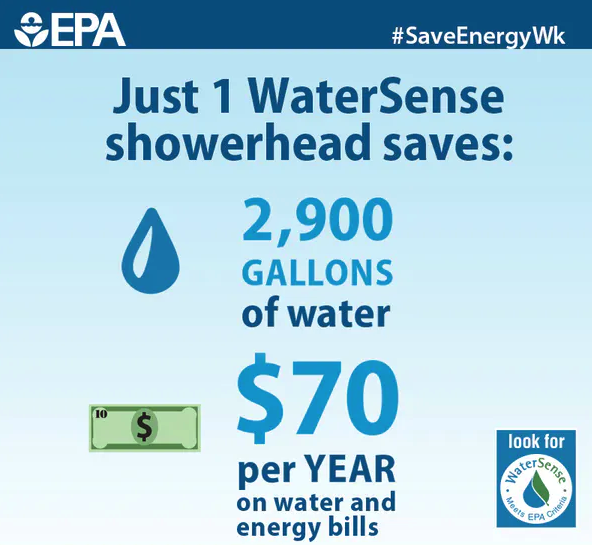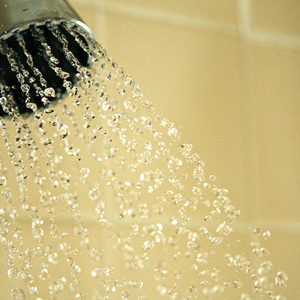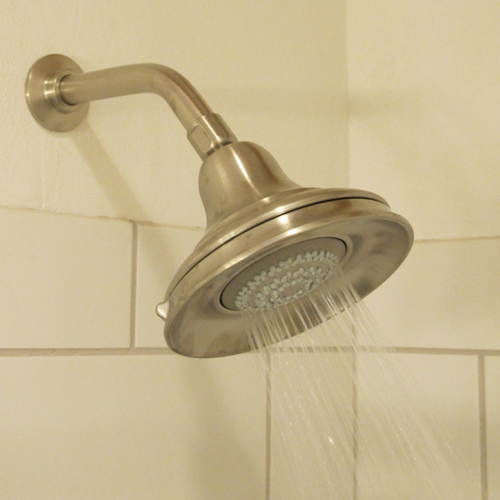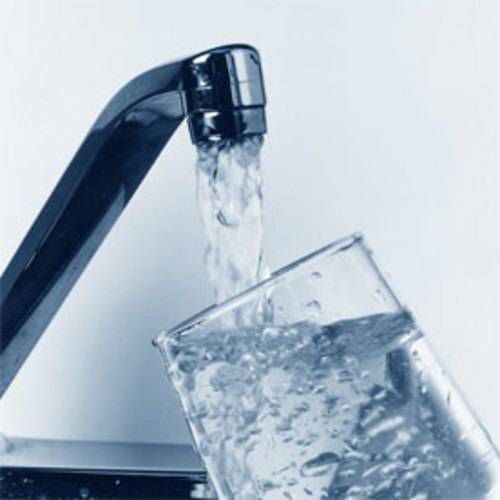
For more than 25 years, Congress has directed U.S. government agencies to set energy and water efficiency standards for many new products. These measures conserve resources and save consumers a lot of money. Until recently, they had bipartisan support.
But President Trump has turned efficiency standards into symbols of intrusive government. His administration has opposed many of these rules, including standards for light bulbs, commercial boilers, portable air conditioners and low-flow toilets. His latest target: showerheads.
The Energy Policy Act of 1992, passed by a Democratic Congress and signed by Republican President George H.W. Bush, set the maximum flow rate for showers at 2.5 gallons per minute. Now the Trump administration has increased that rate, which Trump calls inadequate to wash his “beautiful hair.”
It may sound funny, but it’s not. As someone who writes and teaches about water law and policy, I know that the U.S. water supply is finite and exhaustible. Most Americans take water for granted, but as population growth and climate change exacerbate water shortages, experts increasingly argue that water policy should promote conservation.

When is a showerhead not a showerhead?
On Aug. 13, 2020, the Department of Energy’s Office of Energy Efficiency and Renewable Energy issued a Notice of Proposed Rulemaking to amend the existing standard for showerheads. The document’s definition of showerheads exemplified the byzantine logic behind this policy shift.
For example, it provided three images of fixtures with between three and eight heads attached to a single pipe coming out of the wall. So long as none of the individual heads had a flow greater than 2.5 gallons per minute, the measure asserted that each fixture satisfied Congress’ quest for water and energy conservation.

How can the Energy Department allow shower fixtures with as many as eight heads, each emitting 2.5 gallons per minute? For context, Webster’s dictionary defines a showerhead as a “fixture for directing the spray of water in a bathroom shower.”
But the Trump rule interpreted “showerhead” to mean “an accessory to a supply fitting for spraying water onto a bather.” With this sleight of hand, a congressional rule limiting showerhead flows can be deftly avoided by installing a hydra-headed fixture with multiple “showerheads,” each flowing at 2.5 gallons per minute.
The agency also released a fourth image of a wall fixture with seven nozzles, which the new rule would not subject to the 2.5 gallons per minute maximum. The Energy Department deemed these fixtures a “body spray” rather than a showerhead because they are “usually located” below the bather’s head. (Of course, the person showering may be short, or the plumber may install the fixture high on the shower wall.) Body sprays may have six or eight nozzles with no flow limits.
The sad part of this foolishness is that the Environmental Protection Agency’s WaterSense program, which identifies water-efficient projects and promotes water conservation, has been spectacularly successful, at virtually no cost to consumers or the regulated community. Showers constitute 17% of residential water use. That’s 40 gallons per day for the average family, or 1.2 trillion gallons annually in the United States.
WaterSense fixtures and appliances have saved Americans more than 4.4 trillion gallons of water and $87 billion in water and energy expenses since the program began in 2006. Low-water-use fixtures—including showerheads, toilets and washing machines—are now the accepted norm across the United States.
Some early products, such as the first high-efficiency toilets, had some hiccups. But that was 20 years ago. Today, notwithstanding President Trump’s declaration that “people are flushing toilets 10 times, 15 times, as opposed to once,” consumers embrace low water-use fixtures because they work well, save money and reduce water and energy consumption.
Water shortages are no joke
Today the United States faces serious water problems. Georgia and Florida are fighting a prolonged battle over flows in the Apalachicola River, which the two states share. Excessive groundwater pumping is causing water levels in wells to plummet and springs to dry up. As I explain in my book, “Unquenchable: America’s Water Crisis and What To Do About It,” farmers are competing with cities for water.
Covid-19 has helped to make the affordability of water a national issue. Some rural areas, such as the Navajo Nation, where many people need to haul water to their homes and villages, have higher rates of coronavirus infection. People who have lost their jobs find themselves unable to pay their water bills, which in turn compromises the financial stability of water providers.
Allowing showers to use more water will have several unfortunate consequences for cities across the country. It will increase the amount of water cities must treat; raise the chances of raw sewage overflows at water treatment plants—especially in cities such as Washington, D.C. that combine storm and sewer water; and increase the amount of energy used to pump and treat water.
Disrupting low-flow fixture rules will create special hardships for western cities, such as Los Angeles and Las Vegas, that have struggled with water shortages for decades. Both cities remarkably reduced their total water use between the 1980s and 2020, despite rapid population growth, partly by converting residences to low water-use fixtures.
Water is not just another natural resource. Without it our bodies cease to function, our crops dry up, and our economy grinds to a halt. We can’t make any more water, so it makes sense to use the water we have wisely.
Robert Glennon is Regents Professor and Morris K. Udall Professor of Law & Public Policy at the University of Arizona. This is an updated version of an article originally published on September 1, 2020. This post originally appeared at The Conversation.
Weekly Newsletter
Get building science and energy efficiency advice, plus special offers, in your inbox.















43 Comments
I meen this in a non political way.....but if my water source is a well, and with no water issues in a rural area, why should the federal government have any say in my water usage? This should be a state by state issue and/or regional within the states. I guess I just don't understand why I need to flush my toilet twice as much to accomplish the same goal or drill out my shower heads because of regulations, when I'm not in a city or area with no water.
I understand what you're saying but I can envision the counter-argument that aquifers do not recognize state lines and draw down can exceed replenishment.
John, that's a good point about aquifers crossing state lines.....I just want my toilets to work properly haha.
Great article. When I was in Las Vegas last February I commented to my friends how much water the hotel was using with their showers. Had to be 5 gpm and I could not slow the flow down enough to my liking, have used ultra low flow shower heads for 25 years. I know visitors to LV expect luxury but this was an area where water usage could be drastically reduced with well designed low flow shower heads. All of the extra waste water created must be part of the overall equation.
That water is going to land right back into the the Colorado river.
Whenever the cost of something doesn't include externalities, you get a unending battle with people saying "it's worth it to me, why are you trying to prevent me from spending my money as I see fit?". Stop such nonsense and properly charge for externalities. Then it's "use all you want, the fees more than cover the cost of other solutions".
Or take the case of person A showering at 2.5 gpm twice a day and person B showering at 5 gpm once a day. Do we really want discriminate only against the latter?
It's a tough nut to crack when the externalities have been avoided for decades if not hundreds of years. Take the Georgia/Alabama/Florida water fued as an example. Reservoir Lake Lanier is managed by the Army Corp of Engineers and is the primary water supply for Atlanta. The reservoir was built in 1956 and authorized by Congress under the guise of flood control NOT as a water source (Appeals court reversed that decision). Well Atlanta and surrounding communities have been drawing off the lake for decades and the city has grown. This obviously reduced the flow down stream to Alabama (who needed the water to cool turbines for power plant) and Florida (Oyster beds were becoming too salty due to the lack of fresh water).
So how do you solve this problem w/out capping capacity and hindering growth? You kick the can down the road. The tri-state lawsuit has been going on for 30 years.
“[Deleted]”
Rick, I like this site because I can come here, learn, and interact with people who have intelligent conversations. I know the whole country is political right now, but let's let this place be about building green and non political.
Shawn- well said. Agreed. I deleted my comment.
I hope GBA doesn't become a wasteland of political discussions. Here is some food for thought to those who believe that regulations are good. I used to live in a suburb of Denver. Water is hard to find in that area in quantities needed for a large metro area so it is understandable that prices here maybe higher that in some other parts of the country. The water utility company there has very "interesting" pricing schedule. My bill would run around $90/m during non lawn irrigation season (about 5~6K of gallons), and about $110/m during 5~6 months that I had to run sprinklers (9~10K of usage). If I were not to use any water at all, the bill would be around $70. That includes sewer charge, admin fees, some fees for developing future water sources, and so on. If "they" really wanted to encourage any water conservation, there wouldn't be any fees and surcharges on that bill, and water would be priced per usage only. I am pretty sure that if the rate was $20/1K people would've been way more motivated to conserve water. Why it is not so, idk for sure, but I am pretty sure regulations have something to do with it.
Seems to make sense. Many enviornmental regulations are pushed by activists, and they tend to be based on things that are an issue in relatively isolated areas. A good example are these "low flow" requirements. In some areas, notable the Southwest, this is a BIG issue. I understand that, they have real water issues out there. I'm in the midwest though, surrounded by the great lakes. We have NO water issues here. There is no need for low flow shower heads here, they don't help anyone in those areas that have shortages. It makes no sense to have a national standard for anything that is only a regional issue.
This is similar to the power shortages California was suffering with a little over a decade ago. While these were primarily self inflicted due to poor local policy decisions in that state, there was a push to "save energy" everywhere. I remember Costco running about half their lights in all their stores to "help". This makes zero sense, since the power grids of the West and the East aren't even interconnected -- it's not even possible to help them by saving energy here.
Bill
I have had pushback by others in the past for ascribing negative qualities to people I disagree with. I think that has been fair and I've tried to change my ways. However you are going way beyond what is fair and equitable in what you just said, Zephyr. Admittedly the no holds barred deregulation of energy in the state of California around the year 2000 was unwise. However the only reason it didn't work for us was because Enron chose to exploit that through market manipulation by illegal means.
I think it would wise for you to take account of the title of "Expert" that GBA has conferred upon you and refrain from personal attacks on regions of the country that you know nothing about. I have heard to you say more than once that natural gas utilities were clean facilities because it was your experience that there were no clouds of effluent that were visible when you worked at them. I can't place the comment so I expect there might be denial from you in the future. But I remember you saying it and it's not my imagination. That comment totally ignored the reality of invisible CO2 being emitted from the smokestacks.
Like I said, I try to refrain from personal attacks and usually it's warranted, but you have gone too far here. I've recognized a pattern where you conveniently distort facts when it disagrees with your philosophical orientation and possibly your past income stream. That isn't an excuse. I currently use a propane fireplace but that does not make me try to argue to others that it is environmentally clean heating. I'm sure you understand the same thing about the gas electric utilities you've worked for or contracted for. Don't try to dress them up as being green just because part of your income in your past life came from that. I'm sure this all seems over the top harsh but I really resent your coming for California in this ridiculous and unfair comparison.
And getting back to the origin of this whole topic. There are exceptional shower heads made now that are on the market that do not make you feel that you are suffering at all. I have an aerating one that I love. Do some research instead of just airing out grievances about government being overzealous. Start taking some responsibility that your "expert" status confers.
Both the article and this comment miss the fact that low flow showerheads (unlike low flow toilets) save substantial water-heating energy as well as saving water.
I would encourage everyone to read the links under the section "Water shortages are no joke." We are headed towards water shortages across a much broader swath of the US and more quickly than I think many understand, and water does indeed cross state lines. The impact of Ethiopia's dam on Egypt and Sudan is a very timely case study of this.
The way I see it the rules are written and supported by people that do not believe in the free markets. If we charged more for water where it was in short supply people would make the choice to conserve water and create and buy products to help them do so and move away from the deserts.
At less than a penny a gallon why bother conserving, every bill I have seen both the connection fees and taxes were more than the usage charges and then they confuse the issue by tacking on sewage and trash charges.
Walta
Similar mixed messages with cars and gasoline. We have subsidized low gas prices (no charge for environmental damage, oil related wars, etc) and at the same time, expensive regulations to increase MPG.
I'd like to see a article on why we get these illogical, contentious scenarios and how to fix them. My guess is politicians that are afraid of doing the logical and move on to the illogical. This fuels the "anti-green" movement.
Gasoline isn't subsidized, hell here in NY taxes make up over $.60 of each $2.25 gal of gas.
(prices are a week or 2 old, as I've been watching them go up on a daily basis)
Since oil is priced globally he's talking about the money spent on maintaining stable energy markets where the resource extractors are located in unstable regions of the world. Basically the subsidy is in the form of military aid and adventures in the Middle East. From a national security perspective the less oil used the lower the economic impact of supply disruptions.
Under the Trump administration, the USA has become a net exporter of oil, oil reserves have increased, and military operations in the middle east have been reduced...
Trying to call military action the middle east a "gasoline subsidy" is Disingenuous at best
The proportion of taxes in the price of a commodity doesn't imply anything about whether or not it's subsidized.
Exactly. Other Trevor (Chadwick), it's pretty widely accepted that petroleum products are subsidized, before we even entirely bring into the discussion externalities. Are you basing your statement from an informed position with refutations or are you making assumptive statements?
https://www.eesi.org/papers/view/fact-sheet-fossil-fuel-subsidies-a-closer-look-at-tax-breaks-and-societal-costs#:~:text=These%20include%20both%20direct%20subsidies,natural%20gas%20and%20crude%20oil.
Sovereigns control their own currency so in a theoretical sense they have no spending constraints. The United States for example is in the best position. USD hegemony combined with the size of the economy allows the US Govt to spend with impunity exporting inflation to the rest of the world.
One issue is that only governments are allowed to strike agreements. The Colorado River Compact dated to 1922. IIRC California has some water rights agreements with farmers which date back to before it became a member of the Union.
Lots to think about here. I live in water-rich Upstate NY, and we've had a summers in the last few years when our city reservoir got dangerously low. I've been using--and promoting--sub 2.0 gpm showerheads for years, and have gotten only good feedback from family and clients. This order, if it's not reversed, is going to have implications for water heater sizing and fuel choices. For many households, a 50-gallon heat pump water heater works great with 2.0 or 2.5 gpm showerheads. If you double or triple that flow rate, though, folks will run out of hot water pretty quickly.
Good point.
I think this is something that gets lost in a lot of discussion about (many, not all) environmental regulations. In this case, what do you lose going to a low-flow toilet or showerhead? In my experience, with modern (but not expensive) fixtures, nothing at all!
In the case of low flow shower heads there are 3 savings. Less water used, less waste water created, less energy used for water heating. A winning formula I believe.
> nothing at all!
In my case, a poor performing low flow toilet clogged and caused $1000 in water damage. Plus the cost to replace two toilets with newer models (Toto) and they still aren't quite as reliable as higher flow ones. One of them is rarely used - I'm sure the water savings aren't worth the cost.
While I really hate toilet clogs, I'm quite tolerant of shower flow (I shower at 1 GPM). Unfortunately, the government has decided for me that trading off a higher flow toilet for a lower flow shower isn't an option.
Encourage people to be green with pricing that accurately reflects the cost/value to society. Don't micro-manage the details. Don't send contradictory signals with pricing vs regulations.
Understood on the toilet issue - that hasn't been a problem in my experience, but it sounds like it has been for others.
In terms of pricing, I think a lot of us learned in school or our lives that you want to price in externalities, but in the real world, pricing can only go so far while still being equitable. How do you price water in such a way that deters a wealthy family from wasting water, while not bankrupting or displacing someone making minimum wage? Trying to make that happen without adding in a significant amount of paperwork and bureaucracy (and inevitable carve-outs) sounds like a real challenge to me.
Wealth equity is a separate issue - so keep it separate. Ie, if you believe that proper water costs create a problem for poor families, vote for general assistance/credits - not lower water costs.
The same for gasoline or nat gas or coal based electricity - don't hide behind "I'm concerned about the poor" - we need higher prices to make the right things happen.
This is the toilet that seems to be the best low flush. It is what I have used for years and is what we install in our building projects. Some of the early low flush models were inadequate but the new type seems to be very satisfactory.
https://www.americanstandard-us.com/bathroom/toilets/cadet-3-round-front-128-gpf-toilet-24276
Here's the shower head I use. It's low flow but I honestly don't feel it. The droplets hit your skin at good velocity and they don't feel diminished in size. They easily rinse soap off because of the large droplets. It's very highly rated.
I honestly think many people would rather complain about big government than to do their homework about things that will make the planet more green and still doesn't diminish their lives. I expect that in the general population but it doesn't seem acceptable on a site dedicated to green building - It certainly deserves a LOT of pushback.
https://www.highsierrashowerheads.com/
I've been using the American Standard Cadet 1.28g model in a commercial application for about 10 years and have never experienced any significant issues. It flushes better than toilets that use more water in my experience.
not sure what reservoir you're talking about, but the state has been playing with and making lots of stupid water management decisions over the last several years.
About 15 years ago, I was one of the volunteers at Albuquerque and Bernalillo Co., NM Water Conservation Committee, when both governments were developing guidelines for Water Conservation programs. There were a great mix of ideas, which allow the City and County to be one of the most progressive water conservation areas in the Southwest, especially with the shortage of water supplies.
You may want to read: https://www.abcwua.org/conservation-rebates-overview/,
https://library.municode.com/nm/bernalillo_county/codes/code_of_ordinances?nodeId=BECOCO_CH30EN_ARTVIIWACORE
The one thing I remember the most, was that after the City of Albuquerque, restricted the size of irrigated lawns all homeowners could have in their properties, it also started charging more for higher water usage; the more you use, the more you pay.
So, one of the City Council members, who lived on an upscale golf course subdivision, said that she didn’t care how much she paid, since she had the money to pay for a large, green and beautiful lawn.
Bottom line, there will be always people that will never see the benefit to a community; it’s all about them... 1st ME, 2nd ME, 3rd ME... always ME first! 😝😝😝
Now imagine if the cost of water exceeded the cost of getting more water (yes, there is always a way to do this). By using lots of water, this council member would be providing a public service - subsidizing more/cheaper water for everyone else!
I'm not sure I understand this one Jon. Even if the payments from the rich golf-course owner funded new water extraction ventures, isn't there still a possible environmental cost to those ventures that aren't prevented? You might argue that these negative environmental costs are 'covered' by the revenue if not prevented directly, but I don't see that as an ecological reality, even if it's a theoretical economic one. (net tradeoffs might work well in economics (maybe) but not as well in ecology).
Local damages are sometimes better avoided entirely than 'made up for' with other abstract environmental benefits funded through the local damages. Especially if we can find a way to do both (tax the rich person and use their money for that positive venture while also preventing them from creating that negative for their own wasteful and self-serving desires?).
I'm generally pro internalization of externalities, but sometimes it seems simpler and more effective to just say no (regulate).
Perhaps more importantly, could water actually be priced in such a way as to cause a net environment BENEFIT by using MORE? It seems to imply there are limitless resources, but perhaps there would be upper limit feedbacks. (Like that golf course owner would go broke before water ran out-- but some people are pretty rich these days).
We live on a planet that is 3/4 water. Water recycles itself and doesn't magically disappear. So how come we have shortages? Is there something else that we should consider that comes into play?
Search you tube for videos on "regreening deserts" or "from deserts to forest" that show how terraforming and replanting what was once barren wasteland can bring back water naturally to a region that was devastated from deforestation, grazing and over farming. It's amazing how nature can do what politics cannot.
Good points, but our planet is not 3/4 water. Here is a good visual on this: http://ecowest.org/2013/10/15/drop-on-the-planet-3-visualizations-of-earths-most-precious-natural-resource/. And out of that a small fraction is not very salty to drink.
I assume he meant surface area? Here's a fun graphic when comparing volumes to surface area, the volume of all humans on earth (hint: it wouldn't be visible in the above link) : https://www.syfy.com/syfywire/the-human-cube-the-volume-of-humanity.
We have shortages because the rate of extraction inches closer and closer to the replenishment rate. Minor variations in the weather (i.e. droughts) reduce the replenishment rate even more. It also doesn't help that humans settled in areas where water shortages were common so they can only tip the scales for so long. Billions of dollars in capital have been spent in these areas so there's every incentive to prevent them from collapsing.
Just remodeled my bathrooms 2 years ago with low usage shower heads and toilets... along with improved ventilation and insulation. I think the issue is that some builders don’t size the water pipes correctly and don’t vent correctly. Some of these house designs don’t follow best practices for water distribution or structured plumbing. Do these people remember their hydraulic analysis classes or worry about head loss? Forget the politics and just design a good system using the low water usage components. Gary Klein has a number of good articles but do people know how to read anymore?
Log in or create an account to post a comment.
Sign up Log in